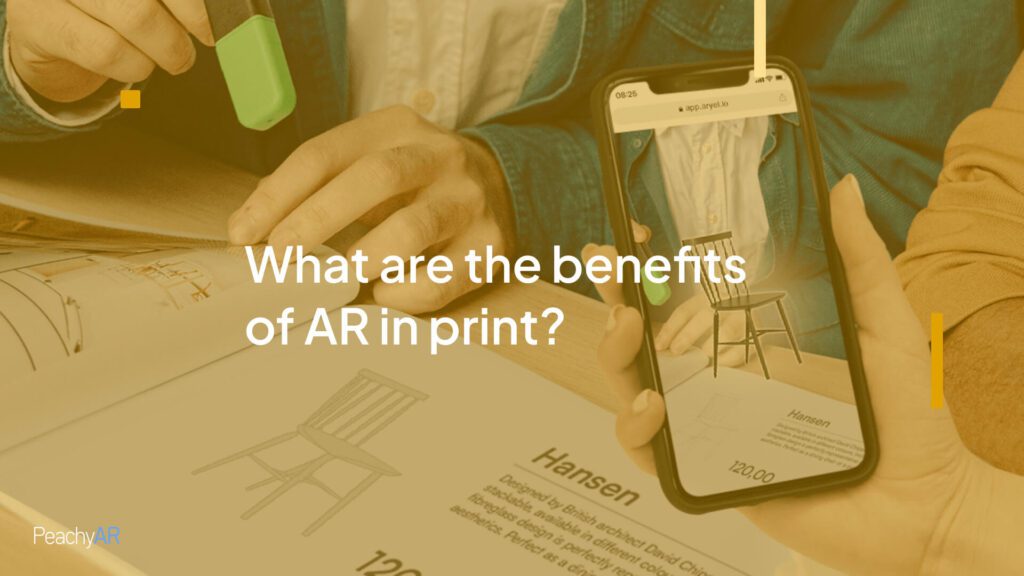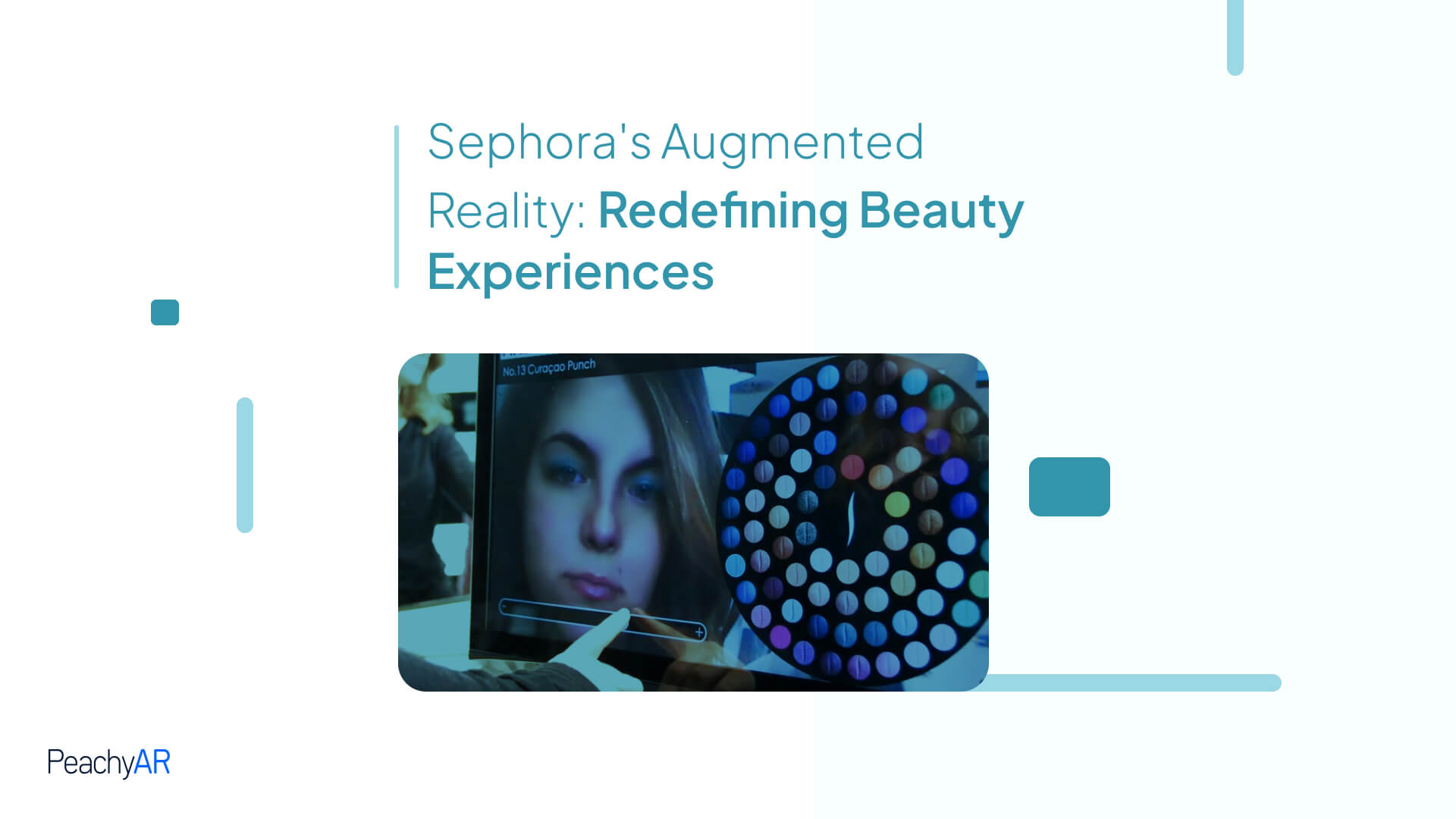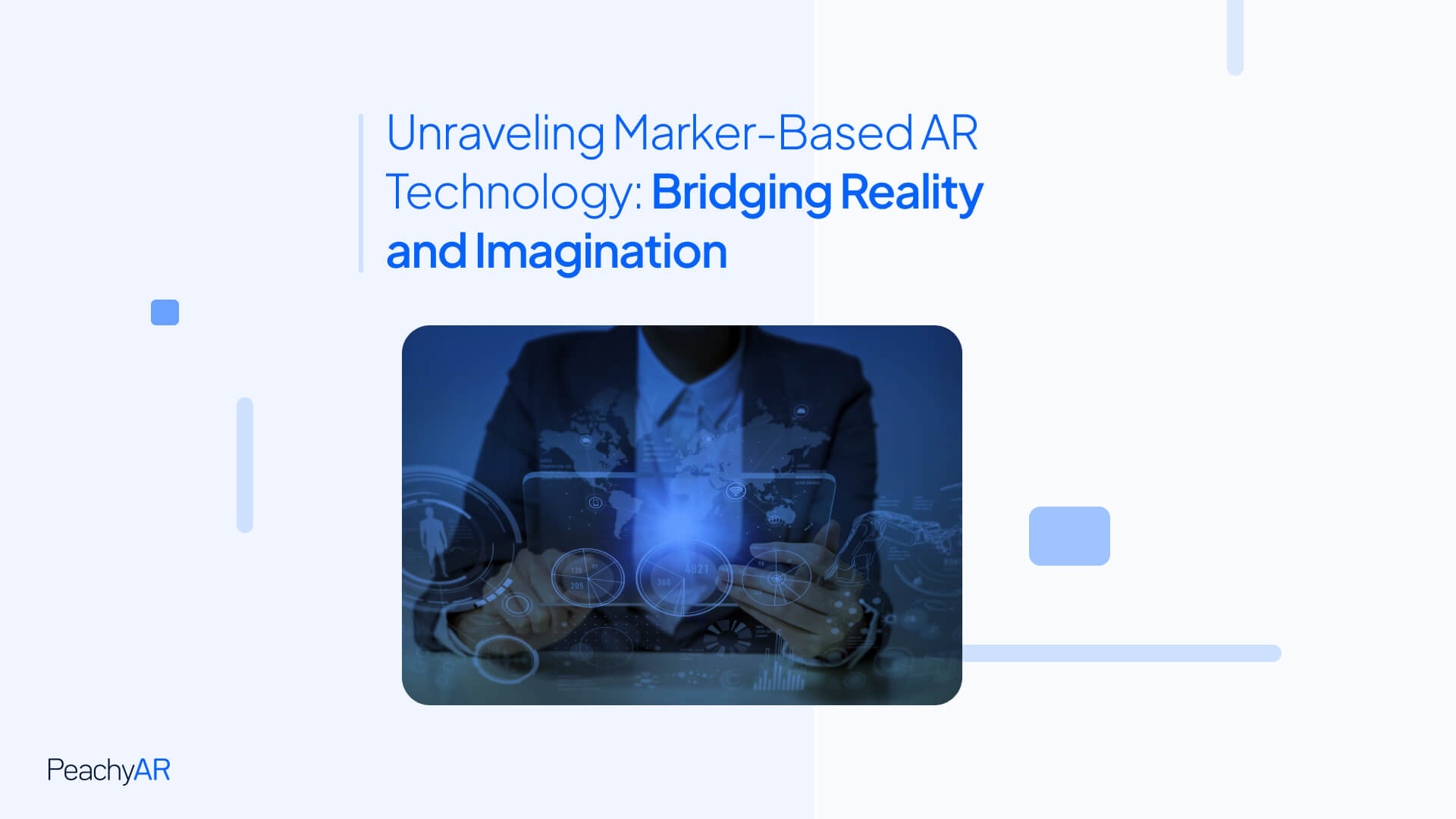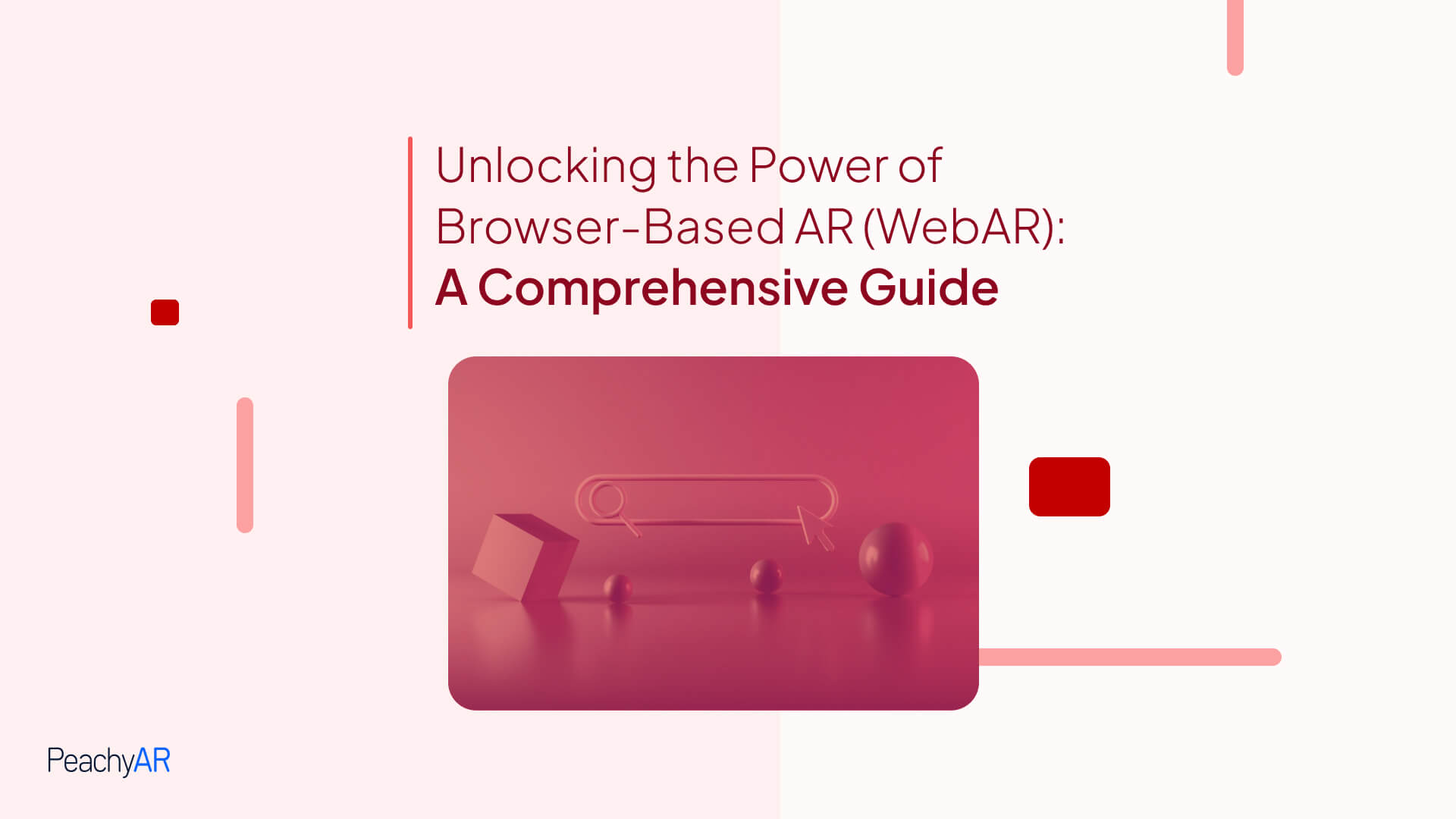Augmented Reality in Print: Augmented reality (AR) is a technology that enhances the real world with digital content, such as images, videos, animations, or sounds. AR can be accessed through devices like smartphones, tablets, or smart glasses, creating immersive and interactive user experiences. (Learn more about AR Technology)
One of the applications of AR is in print media, where it can add value and engagement to printed materials, such as flyers, brochures, magazines, books, or business cards. AR in print can transform static and flat pages into dynamic and interactive ones by overlaying digital content on top of them.
How does Augmented Reality in Print work?
Different ways to implement AR in print exist, but the most common is using a marker-based approach. A marker is a printed image or symbol that can be recognized by an AR app on a device. When the user scans the marker with the device’s camera, the app triggers the digital content to appear aligned with the marker on the screen.
For example, a printed flier can have a marker that activates a video or an animation when scanned. When scanned, a printed magazine can have a marker that launches a 3D model or game. A printed business card can have a marker that displays a portfolio or contact information when scanned.
The digital content can be stored on the device or the cloud, depending on the app and the network availability. The digital content can also be updated or changed over time without changing the printed material.
How can publishers and printers incorporate AR technology into their products?
One of the ways that publishers and printers can use AR is to enhance the content of their books, magazines, newspapers, and other printed materials. For example, a book could have AR features that allow the reader to access additional information, videos, audio, animations, or 3D models related to the text or images on the page. A magazine could have AR features that enable the reader to interact with the advertisements, such as trying on clothes or makeup or viewing product reviews. A newspaper could have AR features that give the reader more context, such as maps, graphs, timelines, or live updates on the news stories.
Another way that publishers and printers can use AR is to create new products or services that leverage the technology. For example, a publisher could create an AR app that allows the user to scan any printed material and access relevant digital content, such as podcasts, ebooks, or online courses. A printer could offer an AR service, allowing customers to customize their printed products with digital content, such as photos, videos, or messages.
The benefits of AR in print are manifold. AR can enhance the user experience by making the printed material more engaging, interactive, and informative. AR can also increase the value and relevance of the printed material by providing additional or updated content that complements the physical product. AR can also create new revenue streams for publishers and printers by offering premium features or services that require AR technology.
However, there are also some challenges that publishers and printers need to overcome to implement AR in print successfully. One challenge is ensuring the quality and compatibility of the AR technology. Publishers and printers must choose the right platform, software, hardware, and content providers for AR products or services. They must also test and optimize their AR features for different devices, operating systems, and network conditions. Another challenge is to educate and attract users to use their AR products or services. Publishers and printers must communicate the value proposition and benefits of their AR offerings to their target audience. They also need to provide clear instructions and guidance on how to use their AR features.

What are the benefits of AR in print?
AR in print can offer several benefits for both publishers and consumers of print media. Some of them are:
- Increased engagement: AR in print can capture users’ attention and make them spend more time with the printed material. AR in print can also create emotional connections and memorable experiences for users.
- Enhanced information: AR in print can provide additional information or details that cannot be conveyed by print alone. AR can also offer different perspectives or viewpoints on the same topic in print.
- Interactive features: AR in print can enable users to interact with the digital content, such as playing games, watching videos, listening to sounds, or exploring 3D models. AR in print can also allow users to share their experiences with others through social media or other platforms.
- Creative expression: AR in print can showcase the creativity and innovation of publishers and designers. AR in print can also inspire users to create their content or stories using AR tools.

What are some examples of AR in print?
AR in print has been used for various purposes and industries, such as education, entertainment, marketing, tourism, art, and more. Here are some examples of AR in print:
- Google Sodar: A web app that uses AR to help users maintain social distancing during the COVID-19 pandemic. The app shows a virtual circle around the user’s feet, indicating the recommended distance from others.
- Vodafone AR Direct Mail: A direct mail campaign that uses AR to promote Vodafone’s products and services. The campaign features a printed flier that activates an AR video when scanned.
- Boot Barn Wonderwest: A direct mail campaign that uses AR to introduce Boot Barn’s new clothing line. The campaign features a printed flier that activates an AR fashion show when scanned.
- Hewlett Packard Enterprise Primera: A direct mail campaign that uses AR to demonstrate Hewlett Packard Enterprise’s new enterprise software product. The campaign features a printed flier that activates an AR presentation when scanned.
- Wikitude: An AR app to provide information and guidance about various places and attractions worldwide. The app recognizes printed images or symbols that trigger AR content related to the location.
- Travel: A magazine that uses AR to enhance its travel stories and tips. The magazine features printed markers that activate AR content such as videos, maps, reviews, or quizzes.
- Christoph Niemann’s 2016 New Yorker Innovators Issue Cover: A magazine cover that uses AR to create an artistic effect. The cover features a printed image of a hand holding a phone that becomes animated when scanned.
How to get started with AR in print?
If you are interested in creating your AR in-print project, here are some steps you can follow:
- Define your goal and audience: What do you want to achieve with your project? Who do you want to reach with your project?
- Choose your platform and tool: What device do you want your users to use to access your project? What app or software do you want to use to create your project?
- Design your content and marker: What digital content do you want to display on your project? What printed image or symbol do you want to use as your marker?
- Test and publish your project: How do you want to distribute your printed material? How do you want to promote your project?
Sign up for PeachyAR and get access to amazing augmented reality features.
Print businesses seeking to harness the power of AR in print can take advantage of a 14-day free trial with PeachyAR. Discover how easy and fun creating incredible AR experiences for your print products is. Join the AR revolution in print today by signing up for PeachyAR’s free trial and propel your print business to new heights. Don’t miss this opportunity to revolutionize your print products with PeachyAR’s innovative AR technology.





